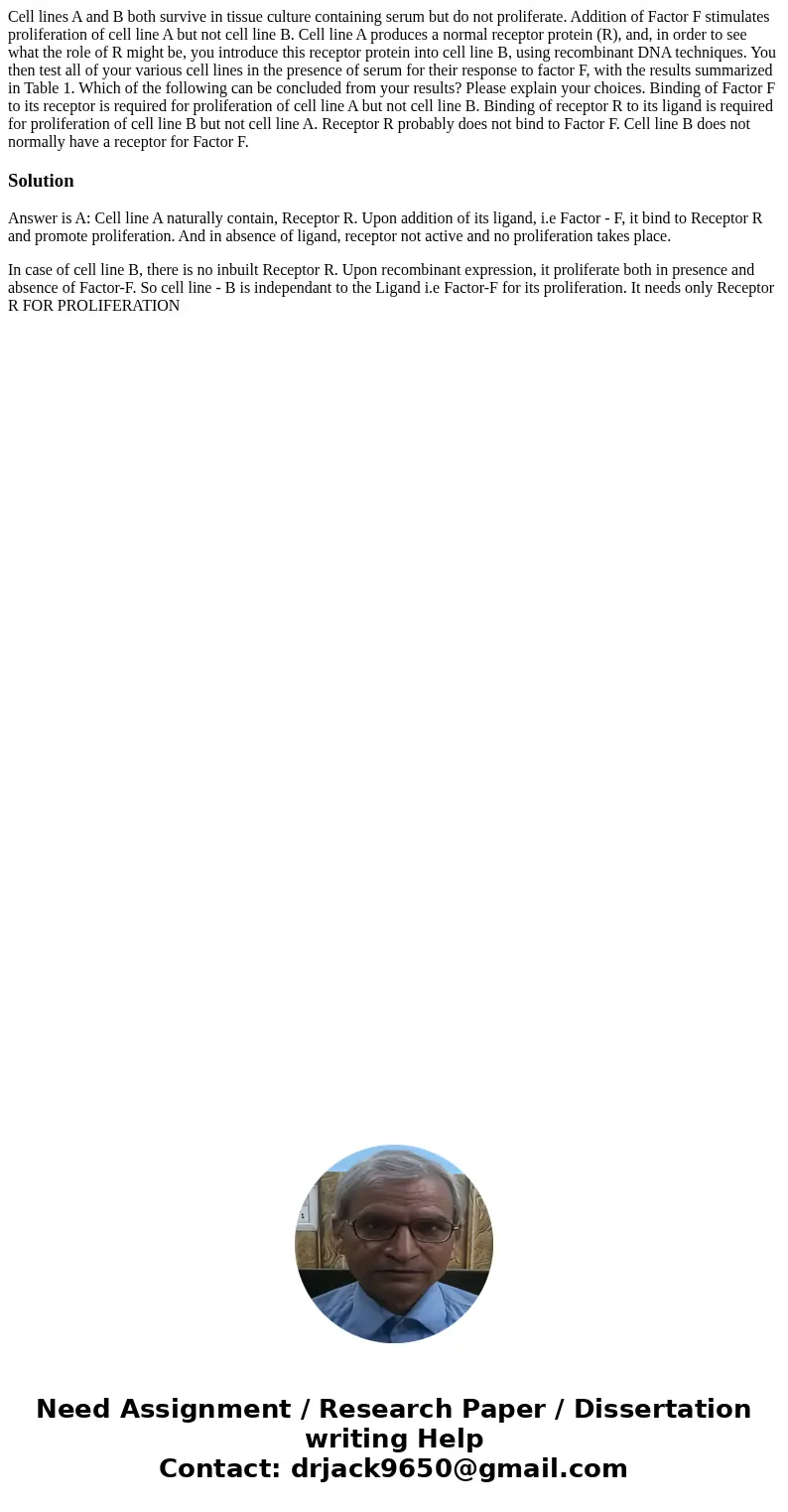Cell lines A and B both survive in tissue culture containing
Cell lines A and B both survive in tissue culture containing serum but do not proliferate. Addition of Factor F stimulates proliferation of cell line A but not cell line B. Cell line A produces a normal receptor protein (R), and, in order to see what the role of R might be, you introduce this receptor protein into cell line B, using recombinant DNA techniques. You then test all of your various cell lines in the presence of serum for their response to factor F, with the results summarized in Table 1. Which of the following can be concluded from your results? Please explain your choices. Binding of Factor F to its receptor is required for proliferation of cell line A but not cell line B. Binding of receptor R to its ligand is required for proliferation of cell line B but not cell line A. Receptor R probably does not bind to Factor F. Cell line B does not normally have a receptor for Factor F.
Solution
Answer is A: Cell line A naturally contain, Receptor R. Upon addition of its ligand, i.e Factor - F, it bind to Receptor R and promote proliferation. And in absence of ligand, receptor not active and no proliferation takes place.
In case of cell line B, there is no inbuilt Receptor R. Upon recombinant expression, it proliferate both in presence and absence of Factor-F. So cell line - B is independant to the Ligand i.e Factor-F for its proliferation. It needs only Receptor R FOR PROLIFERATION

 Homework Sourse
Homework Sourse